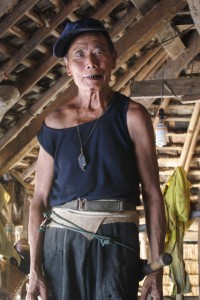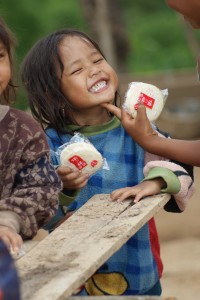It was not so long ago that the Golden Triangle was totally out-of-bounds for tourists. This border region overlapped by Myanmar, Thailand and Laos was ruled by various local warlords instead of national governments and was incredibly dangerous, and tourism didn’t exist.
That’s all changed now. In Thailand it’s become a huge tourist attraction – possibly too huge, with much of the authenticity spoiled or at risk due to mass tourism. In Myanmar it’s very different. It is open to tourists, but security is tight, infrastructure is limited and mass tourism stays away. As such it is far more authentic than anything you are likely to experience in Thailand or even in Laos – the tribes that live in the hills see very few tourists, and one can travel knowing that crass, mass commercialism has not taken hold.
But it does involve some work, planning and a sense of adventure. The main town open to tourists is Kengtung (also known as Kyaing Tong), pronounced locally as “Chang Dong”. It’s got a few hotels and an airport, though itineraries need to remain very flexible as the authorities decide almost on a daily basis which areas are open or closed to foreigners.
Coming from anywhere else in Myanmar, you must fly. Tourists are not allowed to travel overland. However, if you are coming from Thailand, you are allowed to enter overland, but then your visa is restricted to the Golden Triangle only ie you cannot travel elsewhere in Myanmar on the same visa.
So, we decided to fly. The airlines do run flights to Kengtung in high season, but since we were there in low season, none of the private airlines had any scheduled flights to Kengtung. The government-owned Myanma Airlines was flying, but we had read enough about their terrible safety record to not even consider them. Instead, we flew with Air Bagan to the border town of Tachileik, a popular crossing post from Thailand. Tachileik is nothing special at all, but it does have one big attraction a huge and incredibly cheap duty-free market, selling all kinds of stuff from China mainly, and far cheaper than similar places in Thailand. The women in our family bought designer handbags (well at least they looked original) for a fraction of what they would cost elsewhere.
From Tachileik we took a private van to Kengtung, a trip of about 3 hours through incredible jungles and mountains. Only five months before this area had been rocked by a massive earthquake, and we passed through one town that had been totally destroyed, The entire town was now a building site.
We arrived in Kengtung and checked into the Princess Hotel. It’s a pretty basic hotel, but it had a/c, TV, and wonderful management who are extremely knowledgable about the region. The Princess Hotel is the best place in Kengtung by far to find out about trekking in the surrounding areas.
We planned to stay for four days. Foreigners have to sleep in the city every night, so only day trips to the surrounding villages are possible. In every direction you find different ethnic groups, with their own style of dress, religion, way of life etc. But the movement of foreigners is very tightly controlled. We learned that the very first morning that we planned to go trekking – we had to register with the immigration police to tell them where we were going, and we would have to check in with them again on our return later in the day. We also learned that the schedule was not in our hands at all. The authorities decide on an almost daily basis which area are open to foreigners and which are closed, so, although we requested some areas in particular, we were not always given the permission we sought. Yes, we went out every day with our vehicle and guide, but where we went really depended on the whims of the authorities on each day.
It didn’t really matter. Everywhere we went was beautiful – rice paddies in valleys, on mountain sides, everywhere. And the people – some Buddhist, some Christian, some animist – were all amazingly interesting. And totally unspoilt. Wherever we went we took with small gifts for the people – crackers for the kids and bars of soap for the adults, and we were graciously welcomed everywhere. In some places we visited people in their tiny, smoke filled huts, while in other places we were guests of honor of the chief of the village. We were always welcomed with food and drink and I was often given a glass of the prized local rice wine. We were never accosted by people insisting that we buy from them- in some places we were offered things to buy, but that was almost just by the way and there were no hard feelings if we didn’t buy anything (which was usually the case). The villages are unspoilt, though how long that will continue is hard to say.
Our four days went by very quickly – it is an incredible area to explore. We trekked along high mountain tops, sometimes on muddy paths, and loved it.
The kids found all of this fascinating – they interacted with village kids (often it seemed that our kids were the main attraction) and they loved handing out crackers to the children. Our kids also were amazed by the way of life – seeing the pigs and chickens living under the houses, and sometimes even seeing a poster of a pop star incongruously stuck to the wall of a reed hut in the middle of nowhere on a mountainside. Some villages do have satellite dishes and we saw public faucets, and some houses had electricity as well.
Kengtung itself is a small town with an interesting monastery and huge standing Buddha, and leisure life revolves around its small lake, which has teashops and very simple restaurants scattered around it. The big highlight for us was the wonderful market – in addition to exotic produce, flowers and animals, we saw so many other things for sale – handmade paper, agricultural tools, toys, clothes, and even souvenirs from Naga tribes from western Myanmar on the other side of the country that included dried monkeys heads, knives and more.
Kengtung is a very quiet place – at night we had a choice 0f two or three real restuarants and we saw the same fellow travelers eating at these day after day.
(PS: I am now custom-designing trips to Myanmar. For more details click here).




